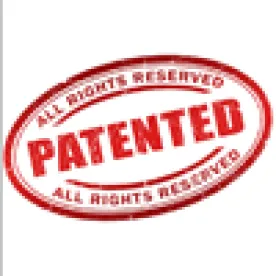In correcting the district court’s claim construction, the U.S. Court of Appeals for the Federal Circuit vacated the district court’s judgment of non-infringement and remanded, finding that the claims were improperly limited to a specific embodiment. Inline Plastics Corp. v. Easypak, LLC, Case No. 14-1305 (Fed. Cir., Aug. 27, 2015) (Newman, J.).
Inline Plastics sued EasyPak for infringement of U.S. Patent No. 7,118,003 (the ‘003 patent), which is directed to tamper-resistant plastic food containers. The district court construed the claim term “frangible section” to mean “a removable tear strip, delimited by at least two severable score lines” and the term “tamper evident bridge” to mean a structure containing “a removable tear strip, delimited by at least two severable score lines.” Inline moved for entry of final judgement of non-infringement on the premise that the claims as construed are not infringed, since EasyPak’s accused product has only a single severable score line. The district court granted the motion and Inline appealed the district court’s claim construction.
On appeal, the Federal Circuit held that the invention as claimed is supported by the patent’s broader disclosure and concluded that the district court erred in limiting the claims to a specific embodiment. The ‘003 specification described the preferred embodiment as containing “a pair of parallel score lines,” but also explicitly disclosed an alternative embodiment containing “a single score line or perforation line.” The district court reasoned that the frequency with which the specification described the frangible section as having two score lines supported this limitation. The Court, however, was not persuaded by this argument, holding that “[a]bsent such traditional aspects of restrictive claim construction, the patentee is entitled to claim scope commensurate with the invention that is described in the specification.”
Despite the district court’s reliance on the prosecution history as justification for their construction, the Federal Circuit found no such support. The examiner did not require the limitation of at least two score lines and it was not a condition of patentability. During prosecution, Inline distinguished its invention from the cited art on the basis that “[n]owhere in [cited art] is there any disclosure, teaching or suggestion to modify the container therein to provide a tamper evident bridge that connects a cover portion to a base portion.” The Court found that this distinction “has no relation to the number of score lines on a tear strip, but rather to differences in the structure and opening mechanism as a whole.”
The Court also found the doctrine of claim differentiation applicable, since the limitation specific to the embodiment of two score lines only appeared in a dependent claim and not in any independent claim. Quoting Phillips, the Court noted that “the presence of a dependent claim that adds a particular limitation gives rise to a presumption that the limitation in question is not present in the independent claim.” Therefore, the district court erred in requiring the asserted independent claim to have the limitation of two score lines.



 />i
/>i

